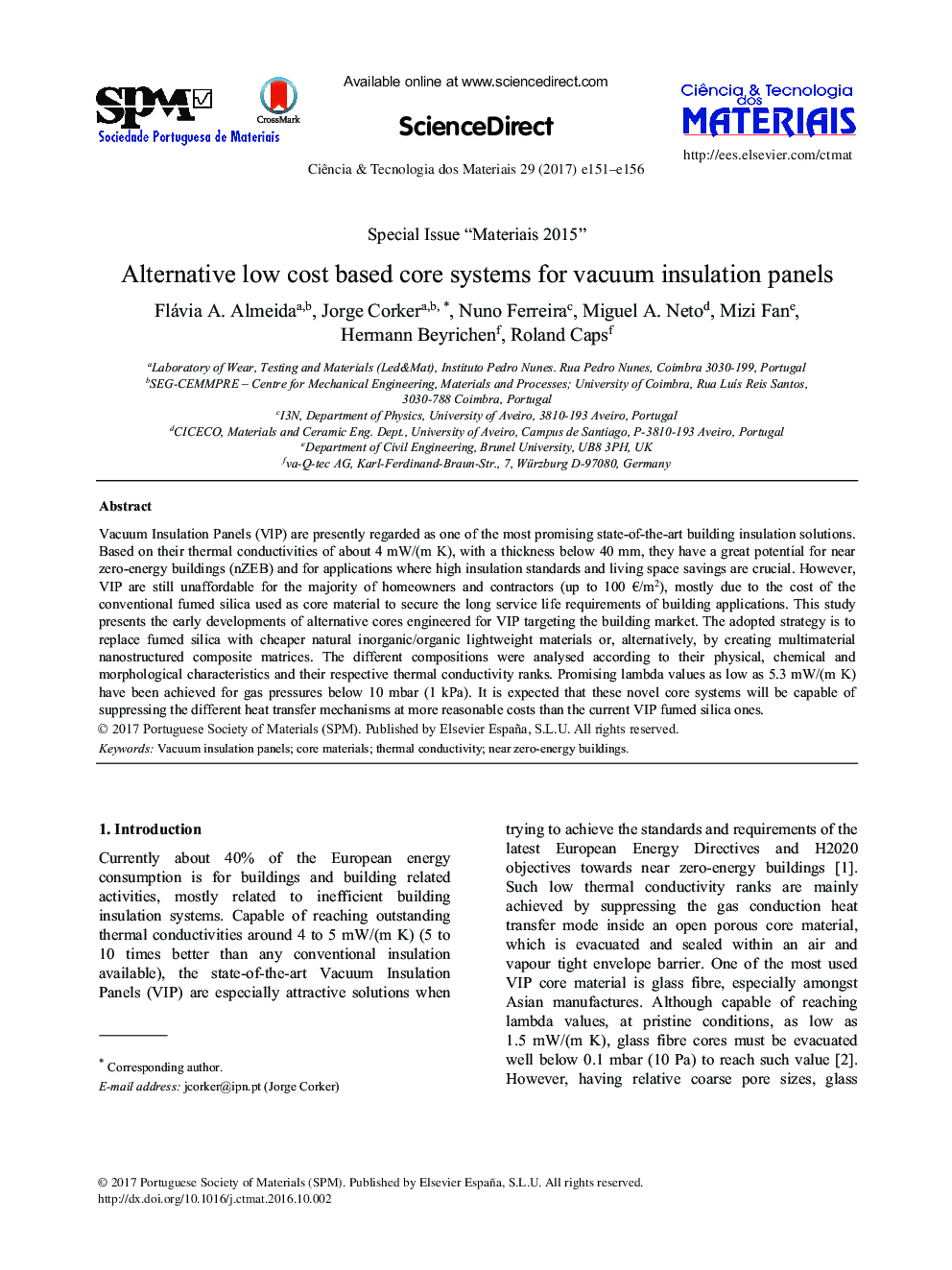| Article ID | Journal | Published Year | Pages | File Type |
|---|---|---|---|---|
| 7211641 | Ciência & Tecnologia dos Materiais | 2017 | 6 Pages |
Abstract
Vacuum Insulation Panels (VlP) are presently regarded as one of the most promising state-of-the-art building insulation solutions. Based on their thermal conductivities of about 4 mW/(m K), with a thickness below 40 mm, they have a great potential for near zero-energy buildings (nZEB) and for applications where high insulation standards and living space savings are crucial. However, VIP are still unaffordable for the majority of homeowners and contractors (up to 100 â¬/m2), mostly due to the cost of the conventional fumed silica used as core material to secure the long service life requirements of building applications. This study presents the early developments of alternative cores engineered for VIP targeting the building market. The adopted strategy is to replace fumed silica with cheaper natural inorganic/organic lightweight materials or, alternatively, by creating multimaterial nanostructured composite matrices. The different compositions were analysed according to their physical, chemical and morphological characteristics and their respective thermal conductivity ranks. Promising lambda values as low as 5.3 mW/(m K) have been achieved for gas pressures below 10 mbar (1 kPa). It is expected that these novel core systems will be capable of suppressing the different heat transfer mechanisms at more reasonable costs than the current VIP fumed silica ones.
Related Topics
Physical Sciences and Engineering
Engineering
Engineering (General)
Authors
Flávia A. Almeida, Jorge Corker, Nuno Ferreira, Miguel A. Neto, Mizi Fan, Hermann Beyrichen, Roland Caps,
